Dream City Narratives: Regarding the Chicago World's Fair of 1893
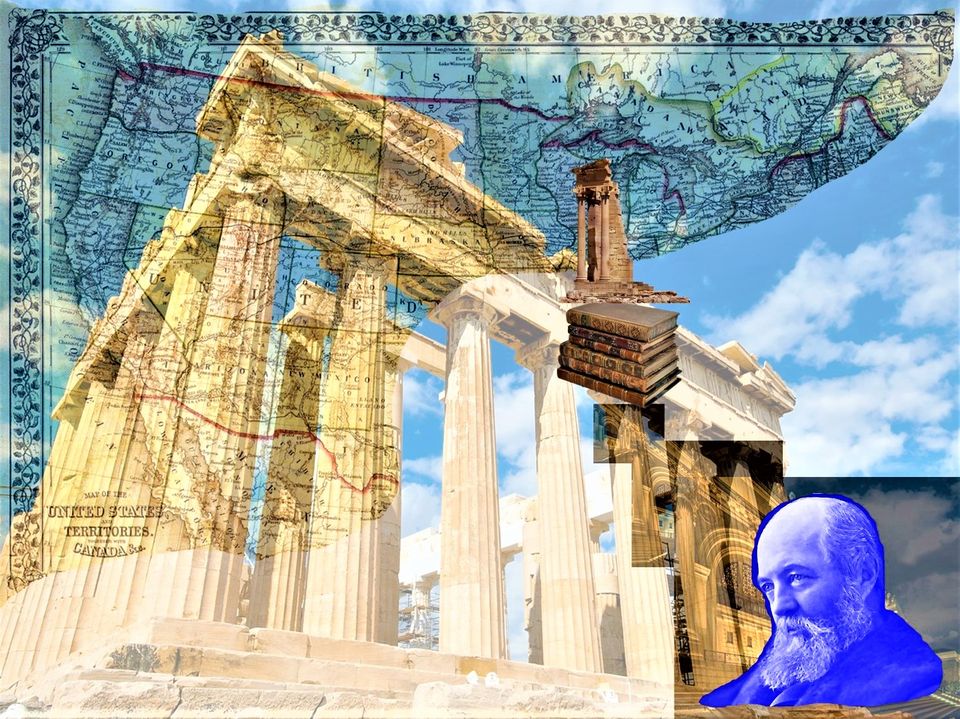
Utopian dreams have long accompanied fairs, taunting visitors to imagine life itself as an amusement. In short, fair and festival spaces suspend the normal rules of society, for a time, and allow participants to indulge in various enjoyments. Lenten carnivals and their dismantling of social norms come to mind. Now, what if the concept were to be expanded, taking the theme from reckless pleasure-seeking to a celebration of commerce and industry? Well, in that case, something unique would be created--nothing less than the splendid environment of the world's fair.
Here, we will reflect on the beauty of a notable example, the Chicago World's Fair of 1893. Regarding this monumental endeavor, and many others of similar scope, you will find a list of sources at the end of this essay. The rich historical contexts of such fairs, and the volumes of information they encompass, are beyond the scope of this reflection. So, allow this brief tour to be a point of departure for additional study. Now, let's proceed into the dreamscape, to enjoy its beauty and, no less, to question some of the issues surrounding it.

And what do we see before us? When I first studied this event, I found the sheer size and ornate detail of the venue to be astounding, especially for the time period. Interestingly, the scene resembles a fanciful rendering of Europe far more than a midwestern city of farmers. Really, it feels like a fantasy setting rather than the gateway to the Western United States. Allow the most brilliant architects of the age to build with abandon, and the results will be worthy of praise, a focal point for the world's attention.
Details, Details
Technically, it was the World's Columbian Exposition of 1893, celebrating the 400th anniversary of Columbus's voyage and subsequent "discovery" of the Americas. Of course, it was one of many such events that took place in the United States, as well as Europe at that time, Paris having hosted their own breathtaking exposition--albeit on a much smaller scale. For the moment, we will focus on Chicago, the White City, to admire the ornate wonders of a world now vanished.
Spanning 690 acres, and hosting roughly 27 million visitors, the venues of Jackson Park and Midway Plaisance were meticulously designed by Frederick Law Olmsted, Daniel Burnham, Charles B. Atwood, and John Wellborn Root. Although each man is fascinating in his own right, I find Olmsted--assigned to design the landscaping of the fair--to be the most intriguing.
From the National Park Service, we learn that the father of landscape architecture was noted for his aesthetic philosophy, believing that our design of natural spaces can influence values and guide human activity in positive ways. With that in mind, I do wonder what he was thinking when the World's Fair came along.
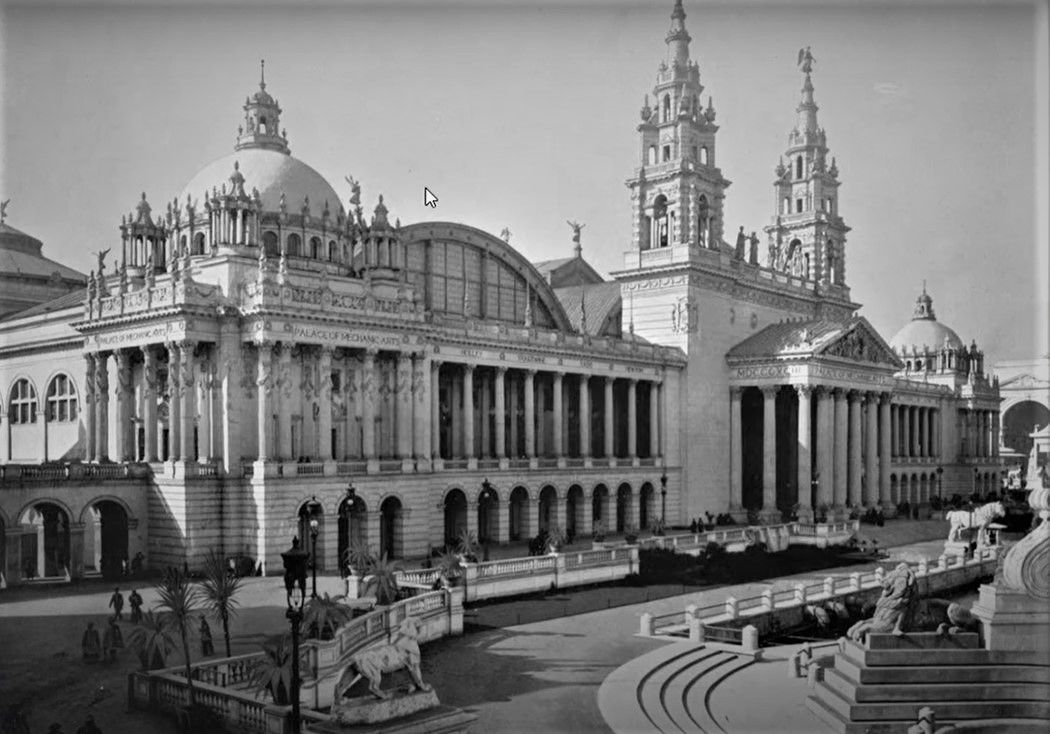
Needless to say, the priority was not to create salubrious green spaces for public enjoyment, as Olmsted might have wished. Rather, the project was set to highlight neoclassical architecture at its finest, showcasing the symmetrical harmony of Beaux-Arts designs. From there, the fruits of exploration could be featured, exotic plants, innovative machinery, all the glories of industrial revolutions. In short, the designers wrote their own version of history with the indelible script of architecture. One can only imagine the arguments that ensued with so many illustrious egos packed together. Here, I should note that no shortage of drama has been associated with this event, the substance of which Erik Larson describes in his book, The Devil in the White City. I digress.
Back to the Dream
It's easy to imagine walking in the shadows of the lions rendered above. We see a few people, clad in heavy clothing of the age, taking their leisure at the fair. What were they thinking, as they gazed at Greek columns and beheld domes more appropriate to state capitals and Roman basilicas than the prairies of Illinois? Even in old photos, the place was astounding, as if no utopian element or elaborate decoration had been too difficult to include. Not that clutter ensued; rather, the venue was indeed the very picture of Beaux-Arts symmetry and craftsmanship, a true wonder of the modern world.

Again, we note that the scale is remarkable, replete with animal renderings and mythical elements galore. Surely, there would have been no doubt of the nation's power and cultural standing. Let's take a closer look at those archways in the photograph above, their height and laudable perfection. For those who understand the building arts, this construction must be compelling for its load-bearing capacity, as well as the symmetry achieved by forgotten craftsmen.
At a time when the frontier was still a bit wild, the urban dreamscape of the fair must have been overwhelming. Was it merely an assertion of nationalism, a young country boasting of its achievements and vast potential? Or was it a whimsical experiment, a game of propaganda for those who could design on a grand scale? It's not hard to imagine that a number of goals were achieved by the Chicago World's Fair of 1893, an event which, quite interestingly, preceded the bloodiest and most horrific century known to history.
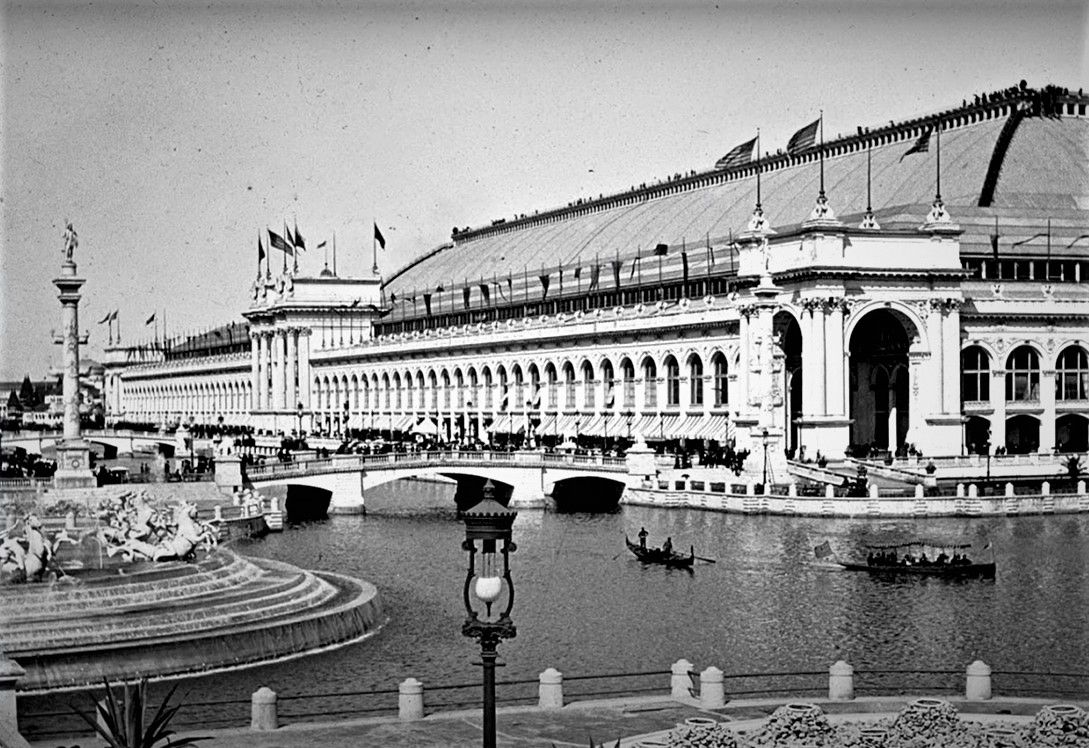
However, in 1893, the nightmares of twentieth century life were still a distance away. Imagine the people drifting peacefully in those gondolas, imbibing the wonders before them, their minds filled with utopian visions which, sadly, would never manifest. It was as if the fair taunted visitors, waving the White City's dream before crowds of men and women who would lose their sons to the First World War. And their descendants? It's possible that the great grandchildren of fairgoers live in crime-ridden sections of Chicago today, far away from the grandeur of expositions and Beaux-Arts designs.
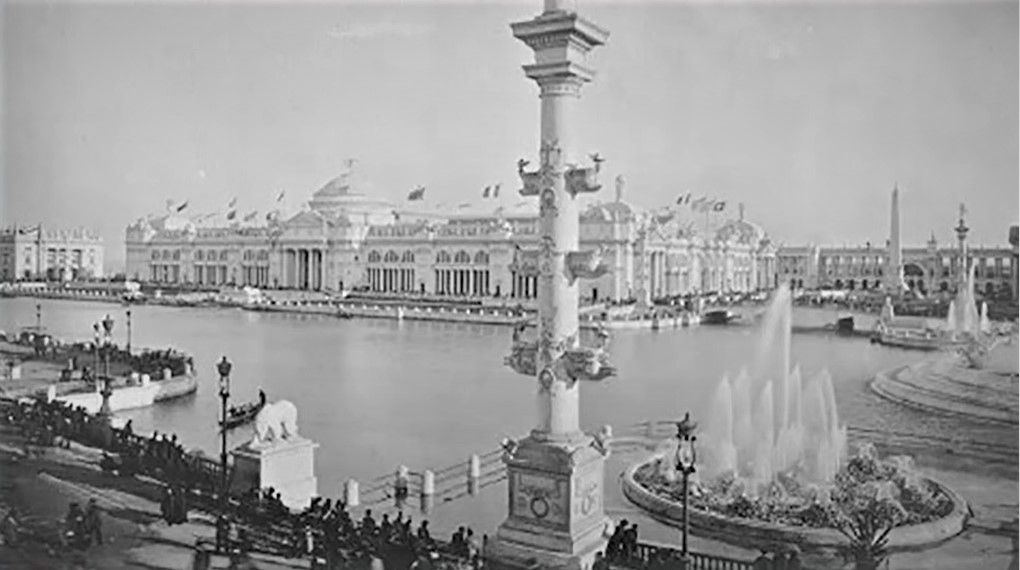
And, yes, there were fountains in the former city, as well. Again, we see another view of the detailed ornamentation and the vastness of these fairgrounds, truly a remarkable achievement for all concerned.
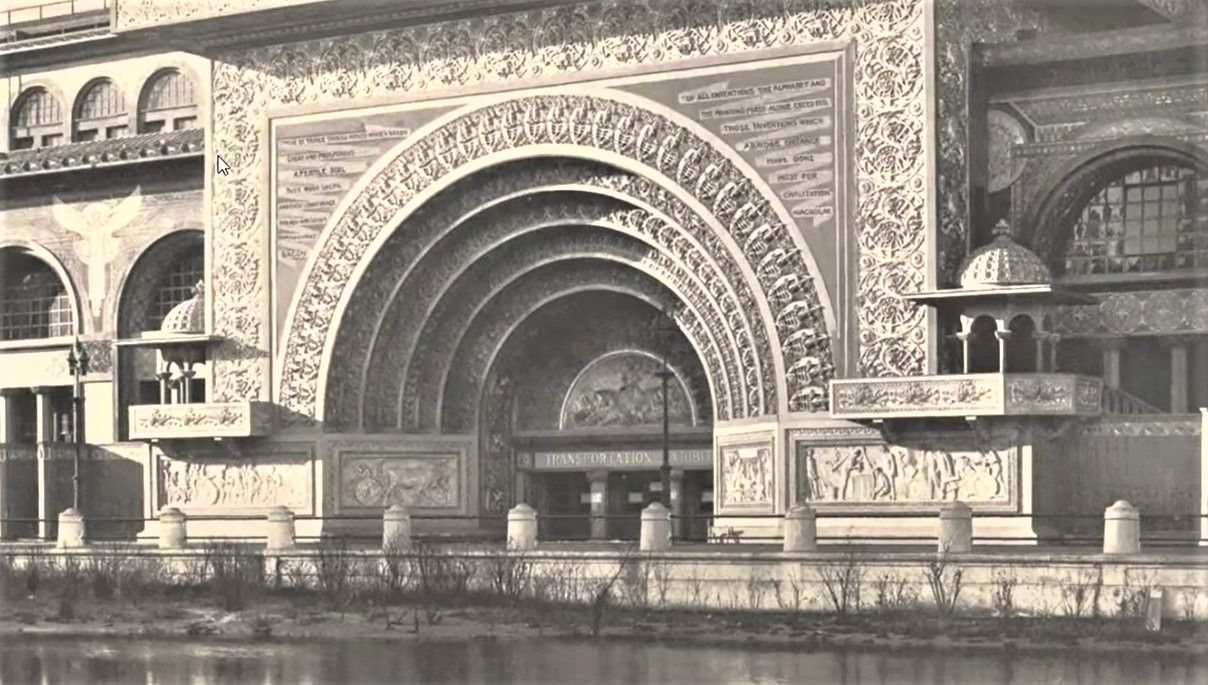
A Deeper Inquiry
And now, we depart the dream to pause and question the reality of things.
We have all heard historical accounts of the event, scholarly voices assuring us that most of the buildings were temporary constructions, designed by the illustrious architects of record. However, in recent years, online researchers have begun to question the official history of the World's Columbian Exposition of 1893, as well as numerous other such events. And, for the sake of offering a balanced reflection, I regard some of their inquiries here, as we conclude our tour.
Firstly, online researchers have questioned the logistical issues, which are, to be fair, the most salient problems with the official history. It would have taken thousands of laborers, and no fewer master craftsmen, to construct these "temporary" buildings in a timely fashion--two years, by most accounts. Would that even have been possible with the technology of the age? When we consider the extant images, and what they reveal, it's hard to believe that the task was accomplished in the manner we were told. Rather, logic dictates that the buildings had likely been there all along, and were simply augmented with additional furnishings and fresh plantings of trees. That seems like the most reasonable conclusion.
And what about the load-bearing capacity of these structures? Is it realistic to think that plaster constructions withstood the weight and impact of 27 million people? Also in question is the apparent weathering we see on these supposedly new structures. From the photos, they appear to be quite patinaed and not freshly white-washed, as one might expect. Really, most of the structures appear to be old, having already been there for decades, perhaps longer. With that in mind, let's once again consider the magnificent details of ornamentation.
Clearly, these pieces could only have been executed by the most brilliant craftsmen imaginable, all with decades of experience at their disposal. And, even then, could they have created so much fine detail in the time allotted? If so, it would surely have been a superhuman feat. Do you remember the archways mentioned previously, their aesthetic and technical perfection, bearing, as they did, the weight of a massive structure above? Again, in my opinion (yes, this is, after all, a personal essay) it's far more likely that the buildings were old at the time of the fair, having been repurposed to advance the worldview of its creators.
As for the demolishing of the venue, the tragedy is considerable. In the end, the futuristic dreams heralded by the fair were no more than empty promises to the millions who enjoyed their beauty. However, the most egregious crime against posterity was the destruction of so much culture; sculptures and waterways, domes and magnificent buildings devoted to the emerging nation were demolished, never to be restored. The skills necessary to create such architecture apparently vanished with its demolition. Why? I argue, along with many others, that the builders were not from our time, but from a much older civilization, the existence of which has long been hidden by our official histories--for whatever reason.
Yes, I think the critics of received history are correct, and I applaud them for their questions--but not the various theories many have devised. At any rate, what about the narratives handed down by previous generations?
Historical accounts are just that, interpretations of evidence, old photos, primary source writings, and artifacts treated as reference points. If we are lucky, credible oral histories can surface from time to time, as well. In the case of the Chicago World's Fair of 1893, we can study images of the venue to gain a certain level of understanding. Moreover, we can use them to question and offer corrections to the historical record.
Conclusion
The examination of photographic evidence is compelling. With it, we can establish a strong argument that the buildings of the Chicago World's Fair of 1893 were not constructed for the event, as we have long been led to believe. Rather, most--perhaps all--of the massive and ornate buildings, and the many examples of brilliant sculpture, had been there all along; the official histories, handed down by our distinguished predecessors, were lies.
With that in mind, how much more should we question regarding the pronouncements of history? How many more constructions ought to be dismantled?
Acknowledgements:
Many thanks to the Old World Exploration YouTube channel for inspiring this reflection. I never cease to find this publisher's content to be insightful and engaging. The photos included here are screen shots from his video series. Best wishes!
All photos in this piece are reproduced for educational purposes, in accordance with Article 17, the Fair Use Clause of U.S. Copyright law.
For Further Reading:
Eric Freeberg & Anne E. Johson. The Progress of Our People: A Story of Black Representation at the 1893 Chicago World's Fair. Mendota Heights, Minnesota (Jolly Fish Press) 2022.
Greenhalgh, Paul. Fair World: A History of World's Fairs and Expositions, from London to Shanghai, 1851-2010. Berkshire, UK (Papadakis, Winterbourne) 2011.
Larson, Erik. The Devil in the White City: Murder, Magic, and Madness at the Fair that Changed America. New York (Vintage Books) 2003.
Maddux, Kristy. Practicing Citizenship: Women's Rhetoric at the 1893 Chicago World's Fair. University Park, Pennsylvania (The Pennsylvania State University Press) 2019.
Neilson, Reid L. Exhibiting Mormonism: The Latter-Day Saints and the 1893 Chicago World's Fair. Oxford (Oxford University Press) 2011
Norris, David L. World Columbian Exposition and 1904 Fair: Diary of a Trip to the Chicago World's Fair (Diary 1893-1904). Marlborough, Wiltshire (Adam Matthew Digital, Publisher) 2016.
Rand McNally & Co's Handy Map of Chicago and the World's Fair, 1893. Chicago (Rand McNally & Company) 1893.
The Chicago Society. Grand Illusions: The Chicago World's Fair of 1893. Chicago (Video Resource Available at the University of Chicago Library) 1993.
The World's Fair Album: Containing Photographic Views of Buildings at The World's Columbian Exposition, Chicago 1893. Chicago (Rand McNally & Company) 1893.
U. S. Senate Finance Committee. Chicago World's Fair (Document on Exhibitions and International Relations) Washington (Federal Government Document) 1929. (Available as a PDF at the University of Chicago Library)
W. B. Conkey Company. The Wonders of the World's Fair. Chicago (W. B. Conkey Company, Publisher) 1894.